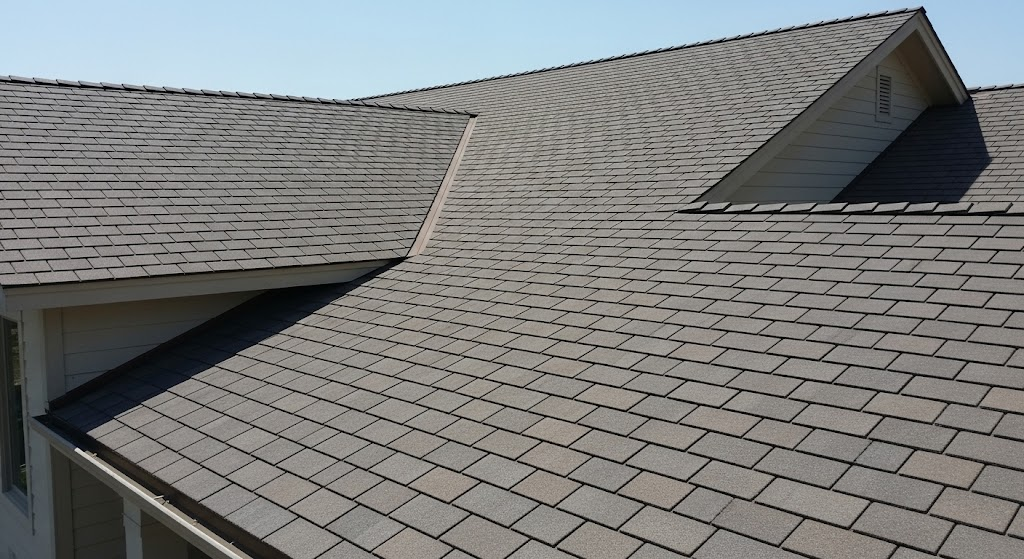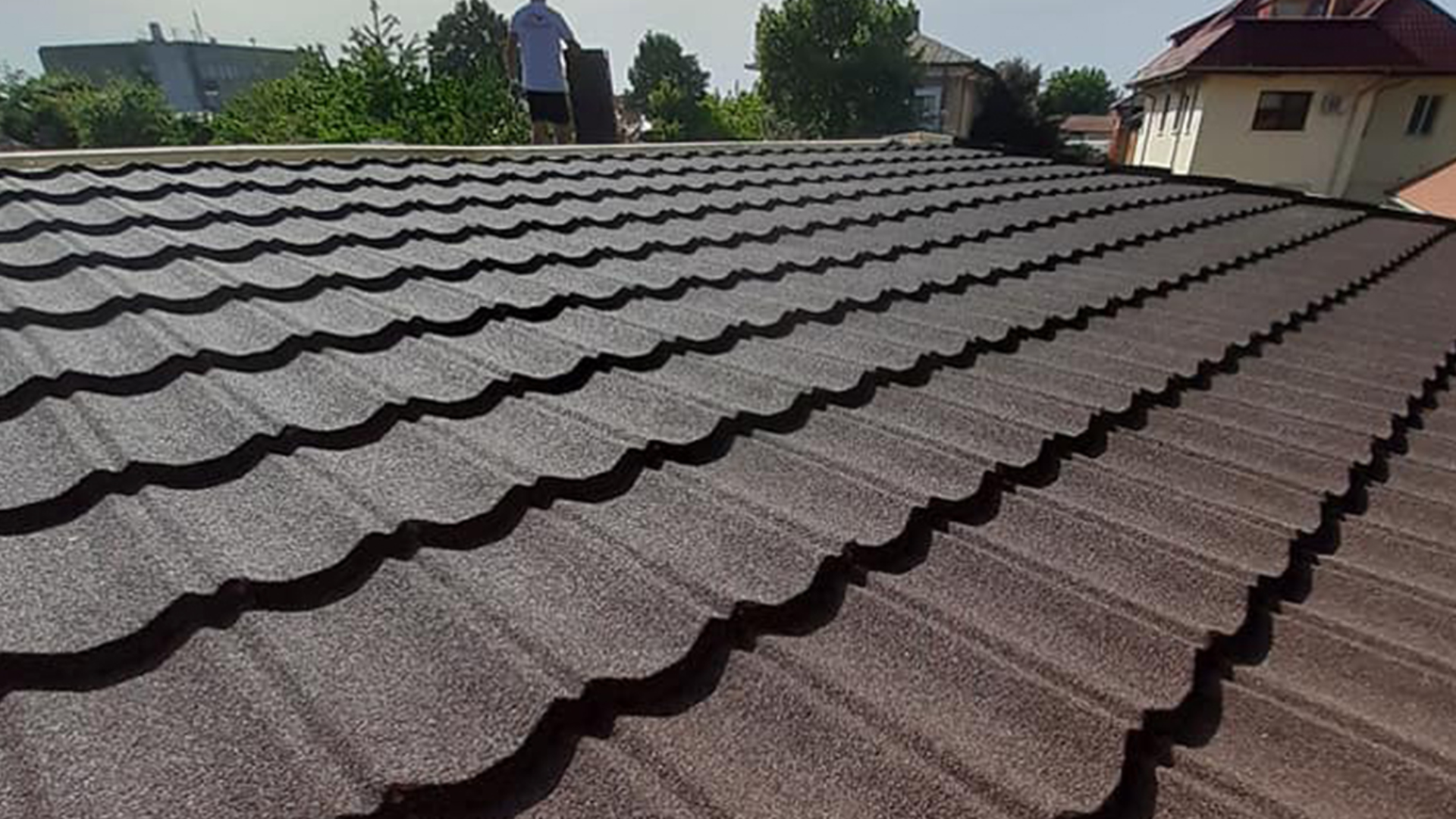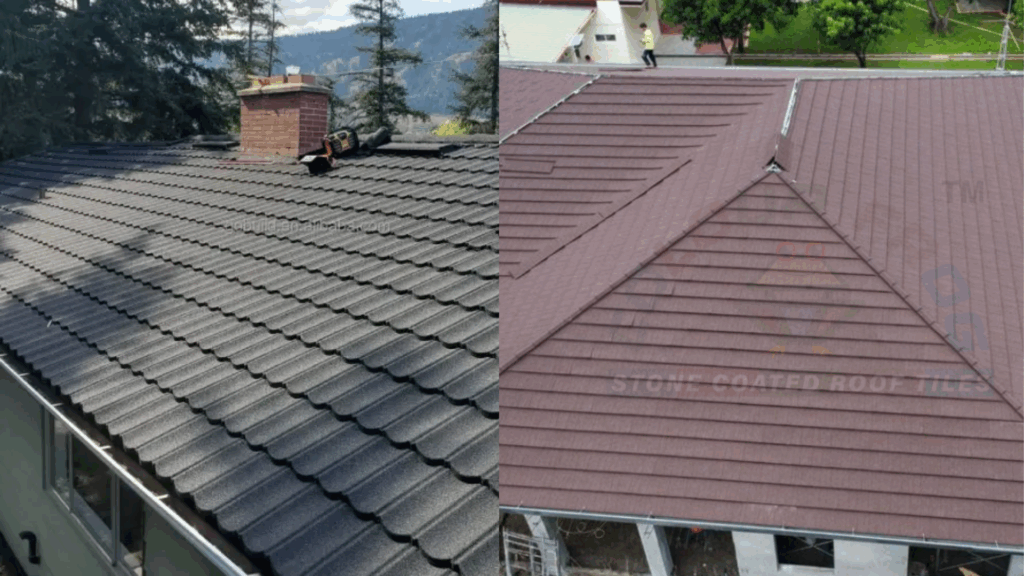Stone-coated steel roofing has become a popular choice due to its impressive durability and aesthetic appeal.
I’ve seen firsthand how it can withstand harsh weather conditions and add a sleek, modern look to any home.
However, just like any roofing material, stone-coated steel does come with its own set of challenges.
While the material is generally low-maintenance, these potential drawbacks can affect the roof’s performance and appearance if not properly addressed.
In this guide, I’ll explain the common problems associated with stone-coated steel roofing.
Understanding these challenges will help homeowners make more informed decisions about their roofing choice and ensure that they get the most out of their investment.
What Is Stone-Coated Steel Roofing?

Stone-coated steel roofing is a modern roofing solution that blends the durability of steel with the classic look of traditional materials like tile or shingles.
The process involves coating steel panels with a layer of stone granules, which not only enhances the roof’s aesthetic appeal but also provides a robust and weather-resistant finish.
This roofing system offers exceptional strength, making it highly resistant to extreme weather conditions such as high winds, hail, and heavy rainfall.
The stone coating also helps to reflect heat, improving energy efficiency and making the roof ideal for both hot and cold climates.
Its versatility in design allows homeowners to choose from a variety of styles, including the look of wood, slate, or clay tiles, without compromising on strength or performance.
How Long Does Stone-Coated Steel Roofing Last?
Stone-coated steel roofing is known for its exceptional longevity, typically lasting between 40 to 70 years with proper care.
The combination of steel and stone granules creates a durable, weather-resistant roof that can handle extreme conditions such as hail, high winds, and heavy snow.
Factors Affecting Longevity:
- Climate: Extreme weather or high humidity may shorten the roof’s lifespan, requiring more frequent inspections and maintenance.
- Installation Quality: Proper installation ensures the roof’s effectiveness and longevity.
- Maintenance: Regular inspections, gutter maintenance, and proper insulation can help prevent damage caused by temperature-related expansion and contraction.
With the right maintenance, stone-coated steel roofs provide reliable, long-lasting protection, making them a smart investment for homeowners
Advantages of Stone-Coated Steel Roofing
Stone-coated steel roofing offers durability, weather resistance, energy efficiency, and aesthetic versatility, making it a great choice for homeowners seeking a reliable and attractive roof.
- Durability: Stone-coated steel roofs can last 40-70 years, offering long-term protection.
- Weather Resistance: These roofs are highly resistant to extreme weather conditions like hail, high winds, and heavy snow.
- Energy Efficiency: The stone coating reflects heat, helping to reduce cooling costs in warmer climates.
- Aesthetic Variety: Available in a wide range of styles and colors, stone-coated steel can mimic traditional roofing materials like tile and shingles.
- Low Maintenance: Stone-coated steel roofs require minimal maintenance compared to other roofing materials.
- Fire Resistance: The materials are fire-resistant, providing added protection in areas prone to wildfires.
- Lightweight: Despite their strength, these roofs are relatively lightweight, reducing structural load.
Common Problems with Stone-Coated Steel Roofing

While stone-coated steel roofing offers durability and aesthetic appeal, it does come with several challenges, including high upfront costs, noise, potential granule loss, and risks of denting and fading.
1. High Initial Cost
One of the main drawbacks of stone-coated steel roofing is its high initial cost.
The manufacturing process and materials used contribute to the increased price compared to traditional roofing options like asphalt shingles.
However, this higher upfront cost can be offset by the roof’s longevity, durability, and minimal maintenance needs, making it a worthwhile investment over time.
2. Noise During Rain or Hail
Stone-coated steel roofs can be noisier during heavy rain or hailstorms due to the metal surface.
The sound of precipitation hitting the roof can be amplified, which may be bothersome to some homeowners.
Installing proper insulation and underlayment can significantly reduce this noise, offering a quieter experience inside the home.
3. Potential for Stone Granule Loss
Over time, the stone granules on stone-coated steel roofs can loosen or wear away due to constant exposure to the elements.
This gradual loss can affect the roof’s appearance and reduce its effectiveness at reflecting heat.
Regular maintenance and occasional repairs or panel replacements may be necessary to keep the roof in good condition.
4. Risk of Denting
Although stone-coated steel roofs are durable, they are not immune to physical damage. Heavy impacts from falling branches, debris, or hail can cause dents in the panels.
These dents may compromise the roof’s integrity and lead to leaks or further damage, requiring repairs or panel replacement to maintain the roof’s functionality and appearance.
5. Installation Challenges
The installation of stone-coated steel roofing requires specialized skills and knowledge.
Improper installation can lead to various issues such as leaks, poor ventilation, or inadequate fastening of panels.
It is crucial to hire experienced and certified professionals for installation to ensure the roof is installed correctly and performs as intended.
6. Expansion and Contraction
Metal roofing materials naturally expand and contract with temperature fluctuations.
If the roof is not properly installed with allowances for this movement, it can cause fasteners to loosen or gaps to form between panels.
This can result in leaks or other structural issues, requiring adjustments or repairs to maintain the roof’s integrity.
7. Color Fading
Over time, the color of stone-coated steel roofing can fade due to prolonged exposure to sunlight and weather conditions.
This fading can affect the roof’s aesthetic appeal, especially in regions with intense sun.
Re-coating or replacing panels may be necessary to restore the roof’s original appearance and ensure its continued protection against the elements.
Comparison with Other Roofing Materials
This comparison table highlights the key differences between stone-coated steel roofing and other popular roofing materials to help you make an informed decision based on your needs.
| Feature | Stone-Coated Steel Roofing | Asphalt Shingles | Clay Tiles | Metal Roofing |
|---|---|---|---|---|
| Durability | 40-70 years | 15-30 years | 50-100 years | 40-70 years |
| Initial Cost | High | Low | High | Moderate to High |
| Maintenance | Low | Moderate | High | Low to Moderate |
| Energy Efficiency | High (reflects heat) | Low | Moderate (good insulation) | High (reflects heat) |
| Weather Resistance | Excellent (hail, wind, fire) | Moderate (prone to damage) | Excellent (fire-resistant) | Excellent (hail, wind) |
| Noise | Moderate | High (especially during rain) | Low | High (during storms) |
| Weight | Light to moderate | Light | Heavy | Light to moderate |
| Aesthetic Appeal | Versatile (variety of styles) | Basic, less attractive | Traditional, elegant | Industrial or modern |
| Installation | Requires professional expertise | Easy to install | Requires professional expertise | Requires professional expertise |
How to Choose the Right Stone-Coated Steel Roof?
Choosing the right stone-coated steel roof involves considering your home’s style and climate.
Select a design that complements your exterior, whether it mimics tile, slate, or shingles. For areas with heavy rain or snow, choose a style with good water runoff.
Energy efficiency is key, so opt for coatings that reflect heat in warmer climates.
Keep your budget in mind, as stone-coated steel is an investment that offers long-term savings through durability and low maintenance.
Finally, hire a professional installer for proper placement and optimal performance.
Maintenance Tips to Address Common Issues
Regular maintenance is key to preserving the longevity of stone-coated steel roofing and preventing potential issues such as granule loss, dents, or leaks.
- Clean Gutters Regularly: Ensure gutters are free from debris to prevent water buildup that could damage the roof.
- Check Flashing and Seals: Inspect flashing around chimneys and vents to ensure there are no leaks or damage.
- Reapply Protective Coatings: If necessary, reapply protective coatings to prevent fading and maintain the roof’s finish.
- Monitor for Expansion and Contraction: Check fasteners and panels regularly for any signs of loosening due to temperature changes.
- Trim Overhanging Branches: Keep trees and branches trimmed to prevent physical damage to the roof from falling debris.
Conclusion
In my experience, stone-coated steel roofing offers a durable, aesthetic solution that provides long-lasting protection for your home.
While there are some challenges, such as higher upfront costs and potential noise, the benefits often outweigh these drawbacks, especially in terms of longevity and energy efficiency.
By understanding the common issues and implementing regular maintenance, you can extend the life of your roof and keep it performing at its best.
If you’re considering stone-coated steel for your home, it’s essential to take into account factors like climate, design preferences, and budget.
With the right care and installation, a stone-coated steel roof can protect your home for decades, making it a valuable addition to your property.
Reach out to an expert today to explore your options and make the best choice for your home.

